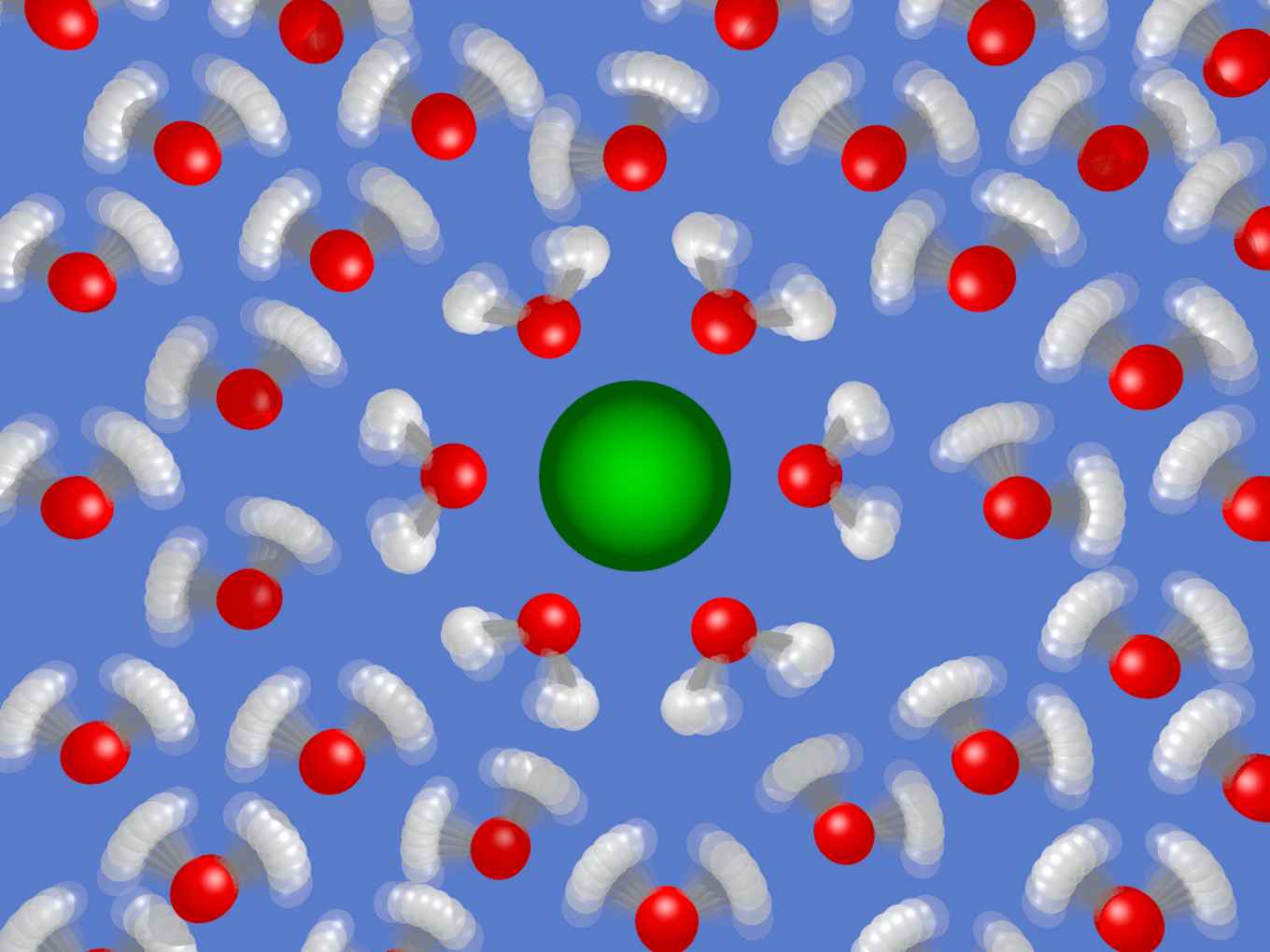Isotope effect reveals non-cooperative water dynamics in salt solutions
23 May 2018

Solutions of ions in water are ubiquitous in physics, chemistry and biology, and the complicated way in which ions influence the hydrogen-bond network of water has been the subject of intensive experimental and computational research. Ions in solution interact with the water molecules surrounding them, thereby reducing the dielectric polarizability of an ionic solution as compared to that of neat water. This reduction arises from two effects: the rotational immobilization of water molecules directly binding to the ions (static contribution), and the long-range dynamical response of water molecules to the moving ions (kinetic contribution).
The separation of these two contributions to the reduction of the dielectric polarizability has always been a challenge in research on ionic solutions. Currently, the standard approach is to use the theoretical expression for the kinetic contribution derived by Onsager and his co-worker Hubbard, which was published in a paper in 1977 that has become a classic in the field.
Putting the model to the test
Researchers from the University of Amsterdam's Van 't Hoff Institute for Molecular Sciences and the Amsterdam-based AMOLF research institute have now developed an experimental method to determine the kinetic contribution. In this method, they compare the dielectric polarizability of a solution of ions in ordinary water (H2O) with the response of the same ions dissolved in heavy water (D2O). As the static contribution to the reduction of the dielectric polarizability will be the same in H2O and D2O, this comparison provides direct information on the kinetic contribution. In this way they could test Hubbard and Onsager’s model, and found that the experimentally observed kinetic contribution is much less than theoretically predicted. The researchers explain the discrepancy from a reduced cooperativity of the motion of water molecules surrounding ions—in contrast to the theory that assumes a uniform degree of cooperativity for all water molecules, independent of their surroundings.
A simple modification
The team proposes a simple modification of Hubbard and Onsager’s theory to take the locally reduced cooperativity into account. This modification makes it possible to determine ionic hydration numbers in a reliable manner, and avoids the unphysical (negative!) hydration numbers that are sometimes obtained when using the original Hubbard-Onsager theory. The results will thus be of practical use, since hydration numbers are commonly used in chemistry and biophysics to characterize salt solutions.

Article
Roberto Cota, Niklas Ottosson, Huib J. Bakker, and Sander Woutersen: Evidence for Reduced Hydrogen-Bond Cooperativity in Ionic Solvation Shells from Isotope-Dependent Dielectric Relaxation Physical Review Letters 120, 216001 – Published 22 May 2018 DOI: 10.1103/PhysRevLett.120.216001